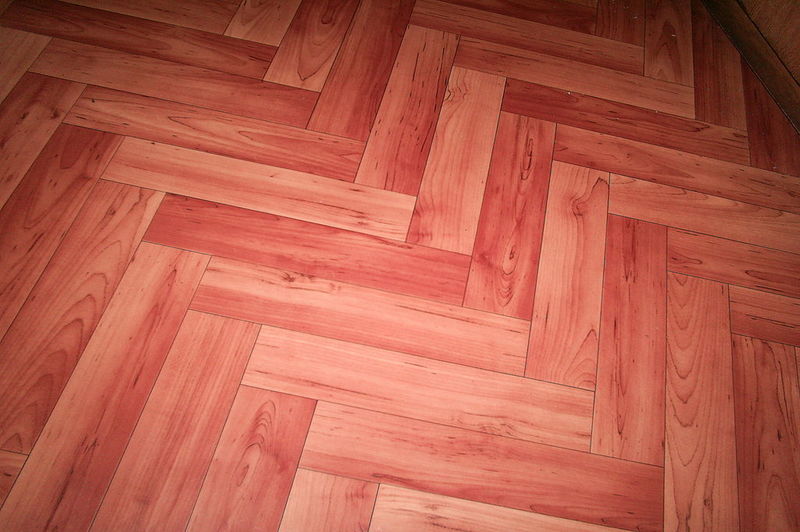It is not that hard to learn how to repair water damaged linoleum floors. Having the knowledge to do it yourself can save you time and money from calling someone else to do the job.
You won’t have to worry about your linoleum floors getting wet again because you will know exactly what to do. First, let’s understand what happens when water gets under the linoleum floor.

What Happens If Water Gets Under The Linoleum?
Water is an essential element and perhaps the most vital resource to get through every day. However, it can also cause some problems, especially on home structures that would be best to stay dry.
In that case, linoleum floors are not an exemption. Water can get under it and break down the adhesive that holds the linoleum and the subfloor together. In some cases, the water can also get trapped for a longer period without getting tracked and cause more severe damage that would require further repair.
If you happen to have the said problem, there are a few things that you can do to solve it. There are also visible signs that you can watch out for to determine whether there is existing water damage on your linoleum floors or not.
Signs Of Water Damaged Linoleum Floors
Linoleum flooring is an excellent alternative to hardwood floors and ceramic tiles because it is durable and long-wearing. It is usually made up of powdered limestone, linseed oil, pine resins, cork, and jute. Many people love this for its environmental-friendly and hypoallergenic characteristics.
It is easy to clean and it’s low maintenance. However, if the water made its way to penetrate the material, that’s when the problem starts. These are some of the signs of water damage that you should look out for:
Discoloration
Linoleum comes in different colors and designs, but they can fade over time due to constant friction and exposure to moisture. This material is not recommended in bathrooms because spills and other forms of water can cause discoloration and staining.
Loosening
Another sign of water damage is if the seams are starting to curl and lift from the floor. Unfortunately, it would be best to replace the linoleum tiles in this occurrence because it would be harder to get them fixed. This only indicates that there is water sitting under the tile for a long time.
Bubbles
It is important not to scrub linoleum floors with too much pressure. Do not soak them with water because they can seep into the edges and penetrate the subfloor. Excessive friction can make the linoleum warp and create bubbles on the surface of the material.
To prevent this, make sure to dry the floor after mopping. You should not ignore puddles and clean them as soon as possible using a towel or anything that absorbs water.
Fixing Water Damage On Linoleum Floors
Fortunately, there are several methods you can do to fix water-related damages on your linoleum floors. You can follow these steps to begin the process.
Method #1. Replacing linoleum tiles
Step #1. Remove the damaged tiles. You can do this by lifting them starting from the edges.
You can use a utility knife to make sure that they don’t damage the nearby unaffected tiles. In most cases, the tile will be easy to remove in whole pieces.
Step #2. After cleaning the area, be sure to find the same design to put in the same place. You can bring a piece of the damaged tile to the hardware store and find the one that matches your flooring.
Step #3. Prepare the floor by checking for underlying damages on the subfloor. If there is one, get it fixed first before installing the tile.
Scrape the old adhesive and other debris. You can also use warm water and a brush to clean any remaining dirt. Do not soak the area with water and dry it thoroughly with a towel or a vacuum.
Step #4. Once the floor is clean, you can now install the linoleum tile. There are two types of linoleum that you can choose from. The first one is the peel-and-stick, where you can peel the sticky side of the tile and apply it down to the floor.
The other one needs a separate adhesive to be put on the floor before applying the tile. Be sure to lay the tiles firmly and gently into place to prevent bubbling and uneven seams.
Step #5. Clean the area. Remove the adhesives that came through the edges with warm water and a clean sponge. Let the tile sit for a day, and you’re done.
Method #2. Repairing cuts
You can repair minor cuts without replacing the whole tile. To do so, you can try getting a spare linoleum tile and sand the surface using sandpaper until it collects dust.
Save the dust and mix it with wood glue. Spread the mixture into the hole or cut. If you don’t have a spare tile, you can use any piece as long as it is of a close color.
Wood glue dries invisible so it would blend effortlessly into the rest of the linoleum. If the cut or hole is more prominent, you can cut a piece and place it into the area. Again, you can use the glue mixture to fill in the gaps and create a seamless repair into the tile.
Conclusion
After learning how to repair water damaged linoleum floors, it will be easier to maintain and clean your flooring. Always remember to avoid leaving standing water and puddles on the linoleum.
As much as possible, mop the spills right away. Install it in places with little to no exposure to water and moisture to prevent the constant need to clean the linoleum.
